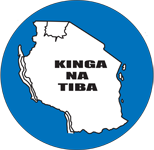
MINISTRY OF HEALTH
Neglected Tropical Diseases Control Program Tanzania

Lymphatic Filariasis is endemic countrywide. The National Lymphatic Filariasis Elimination Programme has been operational since 2000. In areas targeted for treatment, all eligible individuals (aged 5 years and above) within the community are administered with a combination of Ivermectin (Mectizan) and Albendazole annually.
Mass Drug Administration campaigns conducted in endemic districts achieved over 80 % coverage, which subsequently reduced the Mf rate to <2% and enabled the country to target lymphatic ?lariasis elimination in some of the districts. Currently 28 districts out of 121 have on-going MDA campaigns in the country. Post-MDA surveillance and Transmission Assessment Surveys (TAS) conducted from 2013 proved that the disease dynamics have declined.
Hydrocelectomy camps had been conducted since 2008. Lymphoedema Management Training had been started this year, currently Lymphoedema training is on-going in all the Municipality of Dar es Salaam Region.
What is Lymphatic FilariasisLymphatic Filariasis is the parasitic disease caused by infection with nematodes Wuchereria bancrofti, Brugia malayi and Brugia timori and is a leading cause of disability due to parasitic infections in Tanzania. The clinical manifestations of the disease are horrific, including hydrocoele, lymphoedema, orchitis, adenolymphangitis and elephantiasis and such acute and chronic pathologies impose a significant impediment to socio-economic development, and an extremely poor quality of life.
Mapping for lymphatic Filariasis (LF) was conducted between 1998-2004 where LF was found to be endemic in the whole country, and co endemic with other NTDs. By the year of mapping the threshold above which mass treatment for lymphatic Filariasis is indicated in a community (Mf prevalence above or equal to 1%);120 district councils were found to have the criteria for starting Mass Drug Administration (MDA) of Ivermectin and Albendazole. MDA was started in 2001 in Mafia Island and scaled up to all endemic districts by 2015. Management of LF cases has also been going on in some endemic areas. Five regions along the coast (Lindi, Mtwara, Dar es Salaam, Tanga and Pwani) have the highest endemicity, with prevalence rates of up to 16% circulating filarial antigen (CFA).
Lymphatic filariasis infection involves asymptomatic, acute, and chronic conditions. The majority of infections are asymptomatic, showing no external signs of infection while contributing to transmission of the parasite. These asymptomatic infections still cause damage to the lymphatic system and the kidneys, and alter the body's immune system.
When lymphatic filariasis develops into chronic conditions it leads to lymphoedema (tissue swelling) or elephantiasis (skin/tissue thickening) of limbs and hydrocele (scrotal swelling). Involvement of breasts and genital organs is also common.
Acute episodes of local inflammation involving skin, lymph nodes and lymphatic vessels often accompany chronic lymphoedema or elephantiasis. Some of these episodes are caused by the body's immune response to parasite. Most are the result of secondary bacterial skin infection where normal defences have been partially lost due to underlying lymphatic damage. These acute attacks are debilitating, may last for weeks and are the primary cause of lost wages among people suffering with lymphatic filariasis.
Lymphatic Filariasis control/ Elimination Efforts
From 2012 LF elimination activities are implemented through NTD control program. The focus is mainly on interrupting transmission (via MDA) and disability management (lymphoedema management and hydrocelectomy). Mass drug distribution has been conducted in all endemic districts through a phased approach depending on availability of funding.
All endemic districts have been under annual mass treatment with Ivermectin and Albendazole. By Jan 2017, 93 districts out of 121 had stopped LF treatment after five or more rounds of effective mass treatment. Transmission assessment surveys were conducted to determine LF prevalence after 5 or more rounds of Mass treatment, and it was found to be less than 2% in those districts. There are only 27 districts remaining, which require MDA for LF. The reduction in LF endemicity is as shown in the maps below, the first map is the baseline prevalence situation before MDA intervention by NTDCP and the second map is the current prevalence situation as of the year 2017.
Morbidity Management and Disability Prevention (MMDP)Morbidity management and disability prevention are vital for improving public health and are essential services that should be provided by the health care system to ensure sustainability. Surgery can alleviate most cases of hydrocele. Clinical severity and progression of the disease, including acute inflammatory episodes, can be reduced and prevented with simple measures of hygiene, skin care, exercises, and elevation of affected limbs. People with lymphoedema must have access to continuing care throughout their lives, both to manage the disease and to prevent progression to more advanced stages.
The GPELF aims to provide access to a minimum package of care for every person with associated chronic manifestations of lymphatic filariasis in all areas where the disease is present, thus alleviating suffering and promoting improvement in their quality of life.
Success in 2020 will be achieved if patients have access to the following minimum package of care:
- treatment for episodes of adenolymphangitis (ADL);
- guidance in applying simple measures to manage lymphoedema to prevent progression of disease and debilitating, inflammatory episodes of ADL;
- surgery for hydrocele;
- treatment of infected people with antifilarial medicines
Policy
Elimination of Lymphatic Filariasis as a Public Health Problem
In 1997, as a result of advances in the diagnosis and treatment of lymphatic filariasis (LF), the disease was classed as one of six infectious diseases considered to be “eradicable” or “potentially eradicable”. Consequently, the World Health Assembly adopted resolution 50.29, calling for elimination of the disease as a global public health problem. This resolution is further supported in WHA66.12 calling on the concerted efforts expand and implement interventions against neglected tropical diseases to achieve targets set out in the NTD Roadmap and sustain commitments noted in the London Declaration on Neglected Tropical Diseases.
Interruption of transmission of infection can only be achieved if the entire population at risk is covered by mass drug administration (MDA) for a period long enough to ensure a reduction in the level of microfilariae in the blood to a point where transmission can no longer be sustained. The following recommended drug regimens must be administered once a year for at least 5 years, with a coverage of at least 65% of the total at-risk population